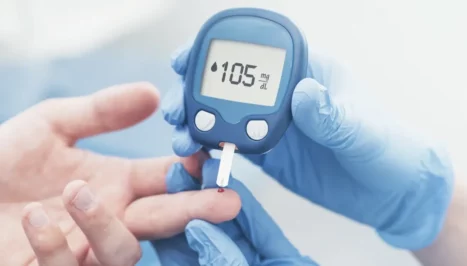What is Sleeve Gastrectomy? Secrets No One Tells You About This Procedure
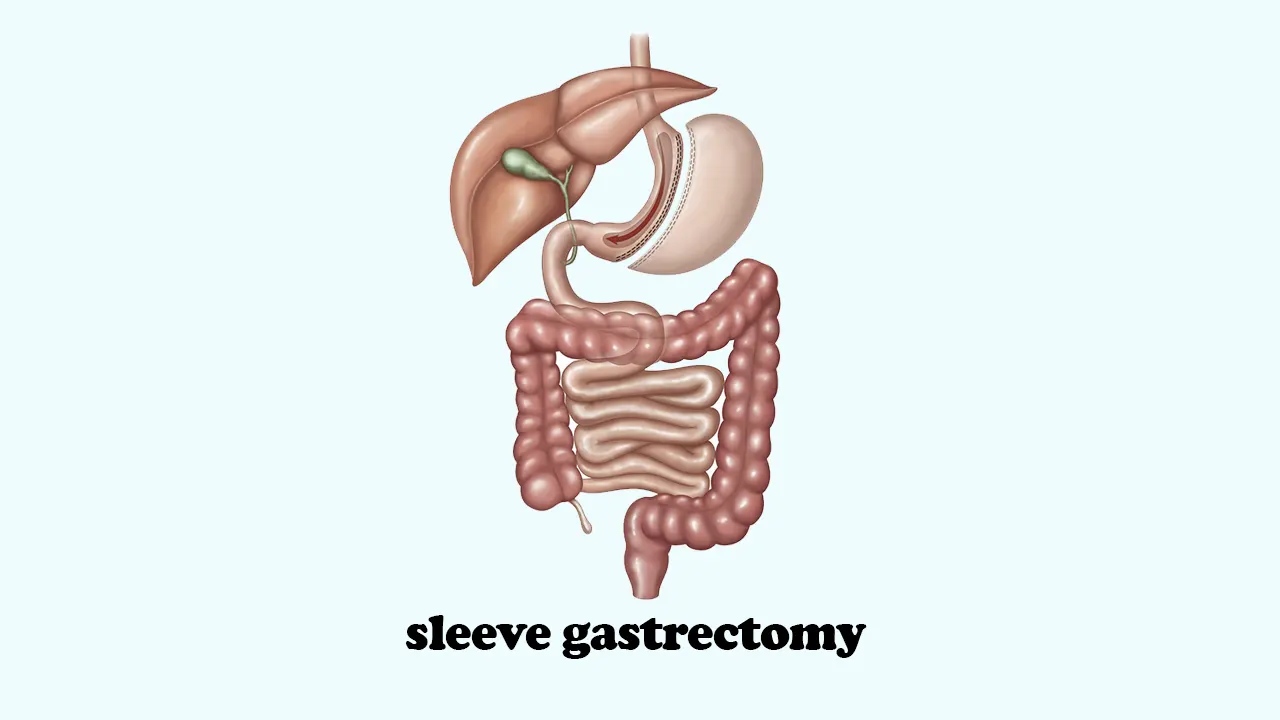
Sleeve gastrectomy is a minimally invasive weight-loss surgery that can reduce up to 80% of excess weight in individuals with severe obesity. For example, a person who is 80 kilograms overweight may lose approximately 60 kilograms after undergoing this procedure. In addition to achieving a healthier body weight, patients who have sleeve gastrectomy often experience complete resolution or significant improvement in obesity-related conditions.
What is Sleeve Gastrectomy? A Simple Explanation
Sleeve gastrectomy is a surgical procedure that significantly reduces the size of the stomach. This helps patients eat less by making them feel full faster. In this surgery, the surgeon carefully removes about 70 to 80 percent of the stomach’s total volume.
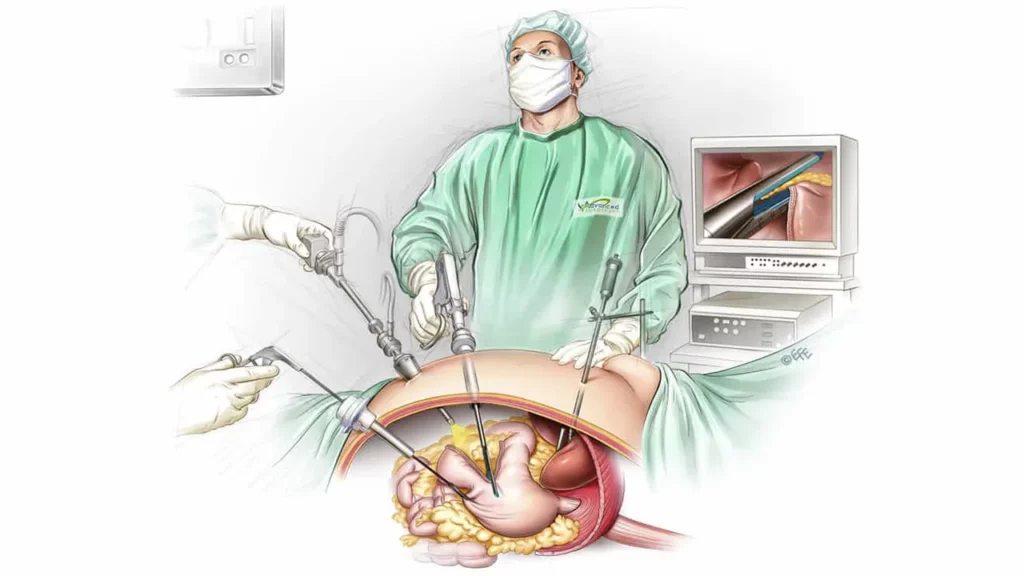
The word “sleeve” in English means “a type of clothing sleeve.” The surgery is named sleeve gastrectomy because the remaining part of the stomach, after removing the larger portion, resembles the shape of a sleeve. However, some people say it looks more like a banana than a sleeve! Despite this, the name is based on its similarity to a sleeve.
Need consultation?
Contact us for expert advice on weight loss surgeries at the best hospitals in Turkey.
What is the goal of sleeve gastrectomy surgery?
In general, weight-loss surgeries aim to achieve two main goals:
- Reducing the size of the stomach and the amount of food intake
- Reducing nutrient absorption by bypassing part of the digestive system
The result of both methods is weight loss. In sleeve gastrectomy, our goal is weight loss by reducing the size of the stomach. This means we help the patient eat less food and feel full faster after eating a small amount, which naturally leads to eating less overall
Also read this: A Complete Guide to Preparation Before Gastric Sleeve Surgery
How Much Weight Can You Lose After Sleeve Gastrectomy Surgery?
it is generally expected that weight loss after sleeve gastrectomy is between 50% and 70% of excess body weight. However, some patients have lost up to 80% or more of their total excess weight. Very few methods, surgical or non-surgical, can provide such significant and safe weight loss.
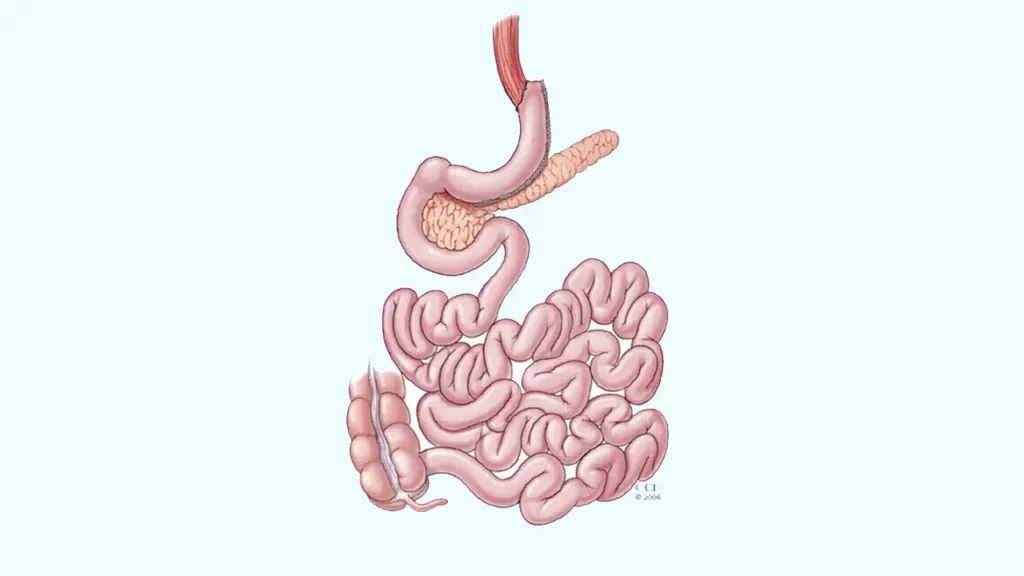
By reviewing the typical weight loss progress after sleeve gastrectomy, you can see that the greatest amount of weight loss usually happens within the first six months following the surgery.
| Time Period | Approximate Weight Loss After Sleeve Gastrectomy |
|---|---|
| 1st Month | About 8 kilograms |
| 2nd Month | About 7 kilograms |
| 3rd Month | About 5 kilograms |
| 4th Month | About 4 kilograms |
| 5th Month | About 3 kilograms |
| 6th Month | About 2 kilograms |
| 1st Year | 50% to 70% of total excess weight |
| 2nd Year | About 8 kilograms |
What are the benefits of sleeve gastrectomy surgery?
At first glance, you might think that sleeve gastrectomy only leads to weight loss. However, that is just the initial benefit. So, what are the other health advantages of this surgery?
- It reduces appetite and hunger by decreasing the production of the hormone ghrelin (the hunger hormone).
- Since it is performed laparoscopically, it involves minimal invasion and fewer complications.
- It does not impose strict dietary restrictions on patients.
- It results in minimal scarring (in most cases, scars fade over time).
- It has the shortest recovery period.
- It offers the fastest and healthiest weight loss process.
- It can effectively treat most obesity-related diseases.
- And more.
Which Health Conditions Improve After Sleeve Gastrectomy?
Although sleeve gastrectomy is a relatively modern surgical procedure, numerous studies and research have been conducted on it. In fact, many new studies are carried out every year to evaluate the effectiveness of this surgery.

Although sleeve gastrectomy is a relatively modern surgical procedure, numerous studies and research have been conducted on it. In fact, many new studies are carried out every year to evaluate the effectiveness of this surgery.
The results of these studies show that sleeve gastrectomy can lead to complete remission or significant improvement in many obesity-related diseases and conditions. For example, most studies report a 60% to 80% improvement in type 2 diabetes among obese patients.
This surgery can help treat or greatly improve the following conditions:
- High blood pressure
- Heart diseases
- Fatty liver disease
- High cholesterol
- Sleep apnea
- Various types of cancer
- Polycystic ovary syndrome (PCOS)
- Asthma
- Migraines
- Chronic pain
- Depression and other mental health issues
- Infertility
- Low testosterone
- Urinary incontinence
- Gout
- Joint problems
These are just some of the health-related benefits of sleeve gastrectomy. Additionally, the procedure offers several other advantages that improve patients’ quality of life, including:

- Increased mobility
- Improved self-confidence
- Better marital relationships
- Enhanced social interactions
- Higher chances of employment in many suitable job opportunities
- Increased life expectancy (through treatment of obesity-related diseases)
- Experiencing the joy of parenthood
- And more..
Who Is Eligible for Stomach Reduction Surgery (Sleeve Gastrectomy)?
Not everyone is eligible to undergo this surgery; certain specific criteria must be met. The most important eligibility requirements for sleeve gastrectomy are as follows:
- Having a Body Mass Index (BMI) of 40 or higher
- Having a BMI over 35 with serious obesity-related health conditions
- Being in good overall health
- Failure to lose weight through other weight loss methods
- Approval from the bariatric surgeon confirming eligibility for the surgery
Ideal Weight Criteria for Sleeve Gastrectomy Surgery
The primary requirement for undergoing sleeve gastrectomy surgery is having a recommended Body Mass Index (BMI). As mentioned earlier, a BMI over 40 qualifies a person for stomach reduction surgery. Therefore, instead of focusing on an exact weight, we emphasize having the appropriate BMI as the key eligibility criterion for the procedure.
How Is Sleeve Performed?
This procedure may seem a bit complex at first, but it won’t take much time for you. All you need to do is find a qualified sleeve gastrectomy surgeon and, within a short period, achieve weight loss and improved health. To help you understand, here are the simple steps you will go through.

Before the Surgery: Preparations for the Day of Surgery and Recovery
The days leading up to stomach reduction surgery are important for both the patient and the surgeon. But why are these days so crucial? What makes the preoperative period so significant?
The reason is clear: preparation for the day of surgery and the recovery that follows is essential. More importantly, it is vital to undergo the surgery without any complications. If a patient is not properly prepared for sleeve gastrectomy, unexpected and complex issues may arise. Therefore, these preparations must be carefully considered.
- Completing necessary medical tests and evaluations
- Following a suitable preoperative diet as instructed by your medical team
- Avoiding smoking and all tobacco products
- Refraining from alcohol consumption
- Stopping certain medications (such as aspirin or blood thinners), under medical supervision
- Taking prescribed medications as directed
- Attending a psychological assessment, if recommended
- Practicing stress management and mindfulness techniques
- Preparing your home and personal schedule for the recovery period after surgery
What to Expect During Sleeve Gastrectomy Surgery
The procedure is performed under general anesthesia using a laparoscopic (minimally invasive) technique. This method is considered one of the safest surgical approaches with fewer complications, and it is entirely different from traditional open stomach surgery
Here is a brief overview of the main steps involved in sleeve gastrectomy:
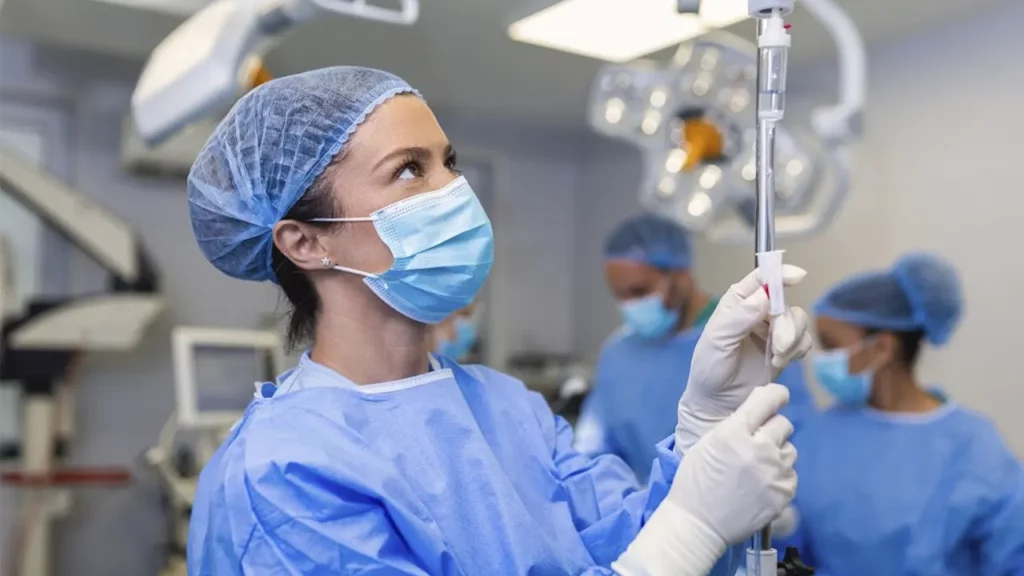
- The patient is placed under general anesthesia.
- Several small incisions (1–2 cm each) are made in the abdominal area.
- The abdomen is inflated with gas to create working space for the instruments.
- A laparoscope (a small camera) is inserted to allow the surgical team to view the stomach.
- Additional thin surgical instruments are inserted through the other incisions.
- A large portion of the stomach (about 70–80%) is carefully removed.
- The remaining stomach is stapled to form a narrow, tube-like shape.
- The stapled area is checked thoroughly for any leaks.
- The instruments are removed and the small incisions are closed with sutures
All of these steps are completed in less than two hours. In fact, the average duration of a sleeve gastrectomy is between 30 minutes and 2 hours, depending on the complexity of the case. This makes it one of the most time-efficient and standardized bariatric procedures available today.
After the Surgery: Recovery and Post-Operative Care
Under normal circumstances, the sleeve gastrectomy procedure usually takes no longer than 40 minutes. Once the surgery is complete, the patient is moved to a recovery room where all vital signs are closely monitored. When the patient is fully awake and stable, they are transferred to a hospital ward.
Most hospitals that offer sleeve gastrectomy procedures are modern and fully equipped, with specialized post-op care units designed specifically for bariatric patients. In such facilities, the patient typically spends one night under medical supervision.
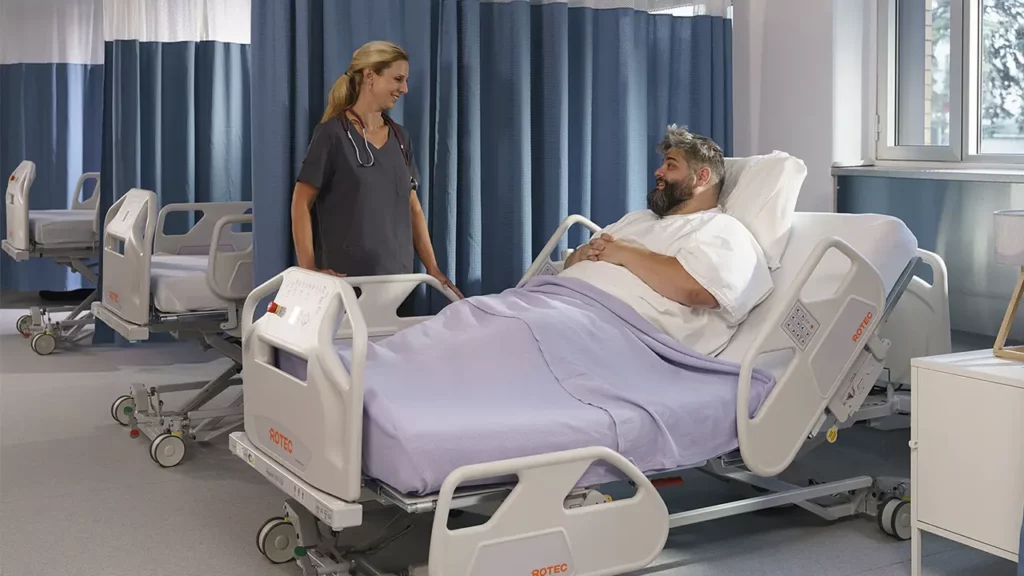
After a one-night stay, the patient is discharged and can return home. However, post-operative care does not end there. The patient must follow detailed instructions, especially regarding diet. For the first month, a specific post-op diet recommended by the bariatric surgeon must be followed to support healing and ensure optimal recovery.
Also read this: 5 Main Stages of the Sleeve Diet After Surgery
What Are the Risks and Side Effects of Sleeve Gastrectomy?
Every surgical procedure, whether invasive or not, carries certain potential risks. This means that one or more complications may or may not occur for the patient. Sleeve gastrectomy is no exception. Despite its many benefits, it can come with some possible side effects.

That said, these complications are generally minor and quite rare. When the operation is carried out by an experienced and skilled surgeon, the risk of complications is greatly reduced — often to almost zero. Nevertheless, here are some of the potential complications of sleeve gastrectomy that some patients might experience, while others may not:
- Hair thinning or shedding (normal)
- Risk of wound infection (rare)
- Risk of bleeding (low probability)
- Gastrointestinal symptoms such as nausea, vomiting, and diarrhoea, commonly known as dumping syndrome (limited cases)
- Leakage of gastric fluids from the staple line (rare)
- Reduced appetite (normal)
- Permanent change in stomach size (due to removal of a large portion of the stomach)
Also read this: Sleeve or Bypass: Comparing Advantages and Disadvantages
Frequently Asked Questions About Sleeve Gastrectomy Surgery
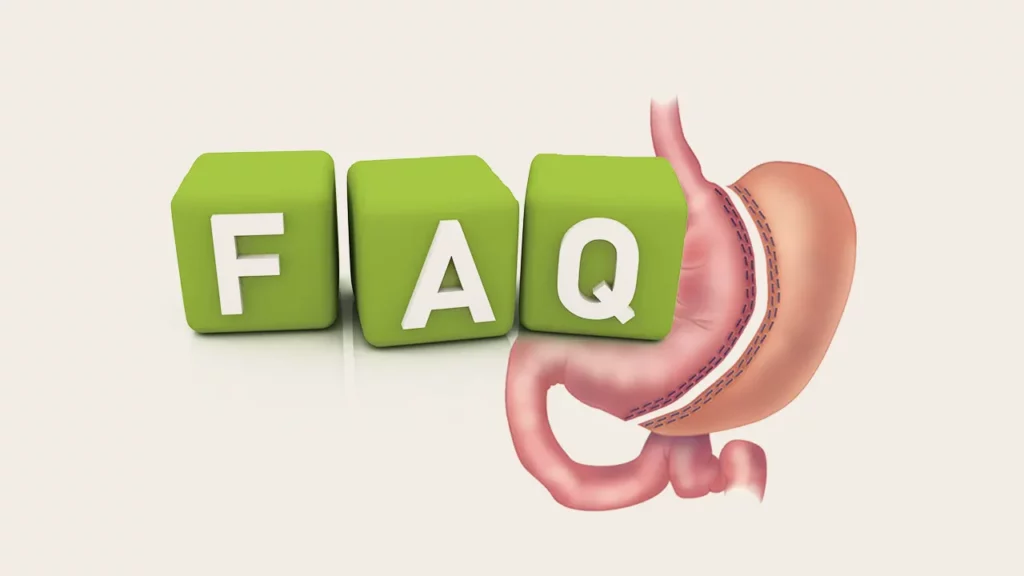
Individuals with a body mass index (BMI) below 35, as they can often lose weight through non-invasive methods such as diet and exercise.
Sleeve gastrectomy has many benefits, including significant weight loss, improved health, better management of conditions like diabetes and high blood pressure, increased self-confidence, improved sleep, and enhanced social relationships.
Among Dr. Anbara’s patients (with over 19,000 successful surgeries), no cases of regret have been reported, as this procedure has led to an improved quality of life.
Usually between 18 and 60 years old. However, in cases of severe obesity and related health conditions, this age range may be adjusted.
Less than 5%, provided the surgery is performed by an experienced team and medical instructions are followed. Under ideal conditions, serious complications are very rare.


